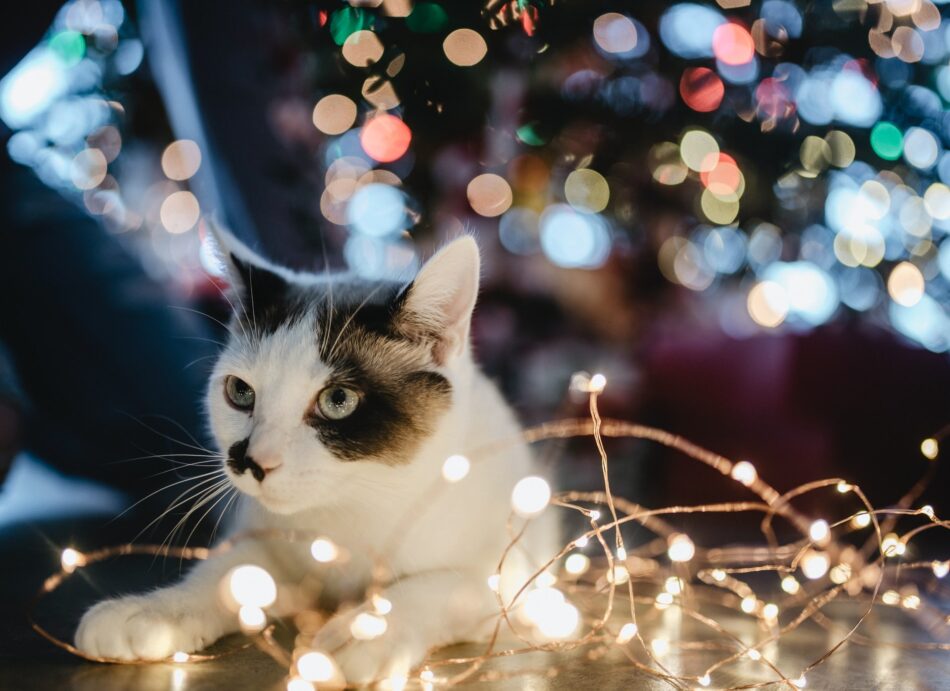 Photo by Jasmin Schuler on Unsplash
Photo by Jasmin Schuler on Unsplash
Holiday Animal Quiz: Can you Identify the roles of these animals in these holiday movie favorites?
1.What does the Grinch tie to Max’s head in the movie?
A. A twig
B. Holly
C. A bell
D. Mistletoe
2.What does the Grinch steal from a mouse when he is stealing from the Who’s in Whoville?
A. A piece of cheese
B. A cookie
C. A candy cane
D. A crumb
3. Who provides the voice of Rebecca the Hen in the 2017 holiday movie “The Star”?
A. Mariah Carey
B. Keegan Michael Key
C. Aidy Bryant
D. Gina Rodriguez
4. In “A Charlie Brown Christmas”, why is Snoopy decorating his dog house?
A. For Charlie Brown
B. For a holiday contest
C. For Santa
D. For Woodstock
5. In the movie “Annie”, what is the name of her beloved Dog?
A. Goldie
B. Molasses
C. Sandy
D. Butterscotch
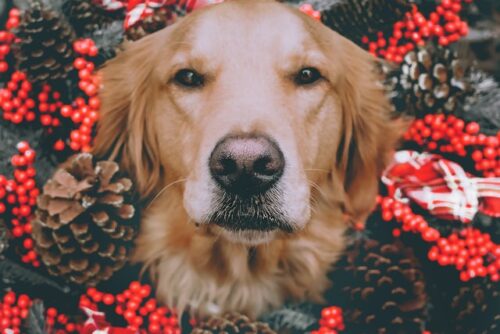
6. In the movie “The Holiday” what is the name of Kate Winslet’s Dog?
A. Charlie
B. Chip
C. Jackson
D. Pip
7. What animal says the line “Bye Buddy, I hope you find your dad!” in the movie “Elf”?
A. A whale
B. A seal
C. A narwhal
D. A polar bear
8. What is the name of Snoopy’s bird sidekick in “A Charlie Brown Christmas?”
A. Tweetie
B. Sunny
C. Pebbles
D. Woodstock
9. What is the name of the famous red-nosed reindeer?
A. Rudolph
B. Prancer
C. Dancer
D. Comet
10. How does Rudolph help Santa on Christmas Eve?
A. His nose helps detect rain or snow
B. His nose detects which houses are on the naughty or nice list
C. He flashes his nose to the airplanes to make way for Santa
D. He guides his sleigh
Answers: 1.A, 2. D, 3. A, 4. B, 5. C, 6. A, 7. C, 8. D, 9. A, 10. D
This entry was posted in Christmas on December 22nd, 2020 by alisa.deluca
It’s nice to have chickens in your backyard but they need to stay there! Seeing them fly away and attempting to catch them again is not necessarily the easiest of tasks. It’s stressful for everyone and sometimes even dangerous for your chickens! So, what is the solution? Cut off their wings? Obviously not, but here are a number of flap busting techniques that may help to keep your feathery friends on the ground.
Why does my chicken want to fly away?
If you are dealing with a runaway chicken, it could be for several reasons. Each chicken’s character is different from one bird to another. While some like to lounge under a tree or in their chicken run, others prefer to frolic in search of freedom. This traveling and sometimes adventurous spirit can be associated with certain breeds of chickens. So, it’s not uncommon to find breeds such as the Leghorn or the Gauloise, for example, perched on a branch to rest. This is mainly due to their lighter weight in comparison to other breeds. Evolved with a fairly developed herd instinct, it only takes one chicken to take flight for the rest to follow suit.
However, sometimes your chickens may fly away, or even jump, not to rest but to escape a situation. A sudden or unusual situation can induce panic. A visit from a dog, the presence of a wild predator such as a fox, or the triggering of an unexpected high-pitched noise can stress your hens and cause them to flee. They then have two options: run or try to fly. Under stress, fear and panic they can easily surprise you and fly higher than you think. They may even injure themselves in a panic to get away. So how do you avoid this kind of situation?
How can I prevent my chicken from flying away?
There are three main precautions that can be taken when you have a flight-happy chicken:
Choose a quiet but well-placed area in your backyard to set up your chicken coop. If you have space, keep the chicken coop away from potential dangers: roads, parking areas, children’s toys. Here, your chickens should feel safe. Their chicken coop is their home, they need to be able to eat, peck and sleep in peace.
Invest in a fairly large enclosure. Having a high enough fence can deter them from trying to fly and protect them from potential animal attacks and external dangers.
An enclosed space, like the Walk in Chicken Run, is ideal for giving chickens a safe area to exercise and stretch their wings, without escape.
The third precaution is often known to chicken owners, but it is not often applied. However, this is an elementary precaution when bringing a bird into a chicken coop. It regards cutting the feathers of a single wing in order to unbalance your chicken and stop them from being able to take flight
. But how to do it? Take a pair of clippers and cut the flight feathers, that is, the larger feathers. You can also cut the primary and secondary flight feathers. The feathers must be cut halfway for it to be effective. Rest assured, we only cut Keratin (what our hair and nails are made of). It’s like going to the hairdressers!
Find the tutorial video “How to Clip your Chickens Wings (Safe and painless) (Easy to do)” by here.
Providing a comfortable living space, and large, safe enclosure will keep your hens happy and healthy in their home. And if necessary, wing clipping can be an effective solution for particularly determined escapees.
This entry was posted in Chickens on December 22nd, 2020 by alisa.deluca
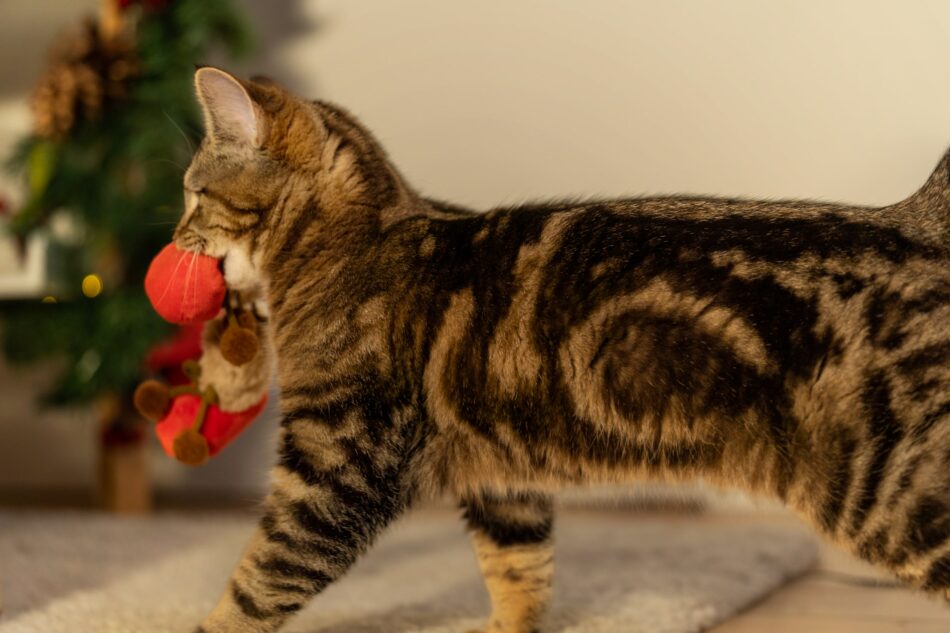
The holidays offer a great opportunity to spend quality time with family and friends – and that includes pets. But, it’s also important to remember that what we enjoy about the festive season isn’t the same for our furry or feathered friends. With a bit of care and consideration, though, you can make sure the holidays are a fun time for your pets too. These ten top tips for helping your pets to have an amazing holiday break will set you on the right track.
1. Turn down the volume
Christmas and New Year are noisy, with people, music and games all adding to the decibels. For cats and dogs, it may simply be a case of looking for a quiet spot, although many dogs will even be perfectly happy at the center of the party. Caged pets such as budgies, finches, parrots and small mammals, though don’t find it so easy to escape the noise.
If possible, cages should be placed in a quieter part of the house if there’s a party taking place in the main room. The Omlet Qute Hamster Cage is the perfect home for one Syrian hamster or two gerbils, with optional wheels to make moving their space from one room to another easy.
2. Forgo the fireworks
The biggest bang comes from fireworks. While some pets will simply head for a safe corner, others are absolutely terrified. If you’re the owner of a nervous pet, speak to your veterinarian as they may be able to prescribe medication to help them relax. For cats and dogs, you can also try pheromone diffusers a few weeks before the fireworks begin. Take a read of our pets’ guide to surviving fireworks blog for more tips on pet safety during this time.
3. Go easy on the treats
There’s lots of food around at Christmas. Your dog will be more than happy to eat leftovers and treats all day, given the chance, but this doesn’t make it a good idea. As far as your dog is concerned, it’s best to treat Christmas and New Year like any other day, perhaps with a simple treat such as a few slices of plain turkey with the evening meal.
The same applies to other pets, and you’ll also need to make sure that everyone knows the rules. A well-meaning guest might try to feed pretzels and salted peanuts to the hamsters and gerbils, or pieces of Christmas cake to the pet birds. These human snacks will bring no benefit to your pet, and some items are even highly toxic. You can find our series of pet-safe festive foods here:
Christmas foods to avoid giving kitty
Christmas treats for rabbits and guinea pigs
Holiday food do’s and don’ts for dogs
4. Hang on to some routine
During the holiday season, it’s easy to lose your routine. You’ll probably be in bed later than usual, enjoying a few too many lie-ins, and preoccupied with children and guests. With everything else going on, there’s a chance that daily tasks such as refilling your pets’ food bowls, closing the hen house door or even skipping the dog walk can fall off the radar.
Most pets will already be thrown by a change of environment from all the Christmas decor, so it’s important to minimize stress as much as possible and keeping their routine as familiar as possible will help.
5. Visitor pep talks
Some dogs love crowds and attention from new people, but even the most sociable of canines need time to chill. Chances are, you’ll have plenty of visitors over the holiday season and some pets won’t appreciate all the extra fuss.
Speak to guests beforehand about your pet’s temperament and what the boundaries are. If there are young visitors, be wary of potential cage-rattling and chasing pets. You also need to remember that birds like to have lights out in the evening, so make sure your late party doesn’t turn into an all-nighter for the budgies, finches and parrots, too. If the room isn’t too noisy, a bird cage cover might suffice; otherwise, relocating the pet cage will be the best option.
6. Keep the pets at home
If you’re traveling away for Christmas, arrange for someone to look after your pets. Consider a cat sitter or chicken sitter if you’re planning on an extended trip away. If this isn’t possible, look into local catteries and kennels.
You can consider taking your dog with you if you’re heading away for the holidays, though. Fortunately, there are many dog-friendly vacation spots available, meaning Fido doesn’t have to miss out on the fun.
7. Winter weather safety
If you’re planning on keeping your pets in another room for the Christmas party, or if they are kept in the backyard all year round, you need to take special measures to ensure they remain warm.
Cats and dogs will benefit from a super cozy pet throw such as the Faux Sheepskin Dog Blanket and Super Soft Cat Blanket from Omlet. Opt to place them on your bed or theirs for optimum comfort and warmth.
For smaller pets kept outside, take a read of our Will my rabbit be okay in winter? guide and our How to prepare guinea pigs for winter blogs. Chickens might be kept outside whatever the season and are hardy pets, but extra precautions should be taken over winter. A well-insulated chicken coop such as the Eglu Cube will go a long way in keeping your flock toasty but they’ll also appreciate an extra layer of protection on their coop from temperature protection jackets.
8. Clean up time
The Christmas season tends to involve lots of pet hazards – wrapping paper, bows, ribbons, tinsel, and bits of plastic to name just a few. To avoid these items ending up in your pet’s mouth or wrapped around their legs, be sure to get everything tidied away once the presents have been opened.
9. Christmas tree watch
A Christmas tree can easily be bashed by wagging dog tails and adventurous cats attempting to climb. For one, it’s a good idea not to have heavy decorations high up on the Christmas tree, as these could easily fall and break, and nothing fragile (or valuable) should be kept within reach of an excited tail.
If your cat’s fascination with the tree doesn’t wane, get them a Christmas tree of their own with the Switch Cat Scratcher. Put simply, it’s the coolest cat scratcher since time began. With the help of tech and tireless testing from our in-house cats, we’ve designed a cat scratching post that your Christmas tree definitely won’t be able to compete with.
With over 1,200 irresistible light modes, the Switch is attractive to our eyes as they are fascinating to feline ones. Plus, with a bamboo base that lasts indefinitely and 100% biodegradable sisal sleeves, your cat’s Christmas wish will be granted all year long.
10. New pet? No worries
You’re probably familiar with the saying that a dog is for life, not just for Christmas, but the same applies to any pet. If you’ve carefully considered that pet ownership is right for you and you have the resources to do so, bringing them in amongst the festive chaos isn’t the best time to put your plan into action But, if you have had a recent animal addition to the family in the past few months, navigating their first Christmas is something you need to account for.
First of all, make sure that new cats and dogs have been introduced to any other pets that could be joining you over the season to avoid potential confrontations. Also, ensure that your home is still pet-proof with any decorations you’ve added to your usual setup. This will likely be their first time experiencing a Christmas and New Year, so pay special attention to how they’re reacting, making sure to remove them from situations that are making them uncomfortable.
Omlet and your pet’s holiday
At Omlet, we know that pet ownership over the holidays isn’t always as glamorous as your festive family portrait might portray. Christmas tree chaos, gatherings and winter weather might be obstacles but with Omlet’s range of innovative pet products such as our Switch Cat Scratcher, easy clean Eglu Cube Chicken Coop and cozy Faux Sheepskin Dog Blankets, we can help make the holidays as smooth sailing as they can be.
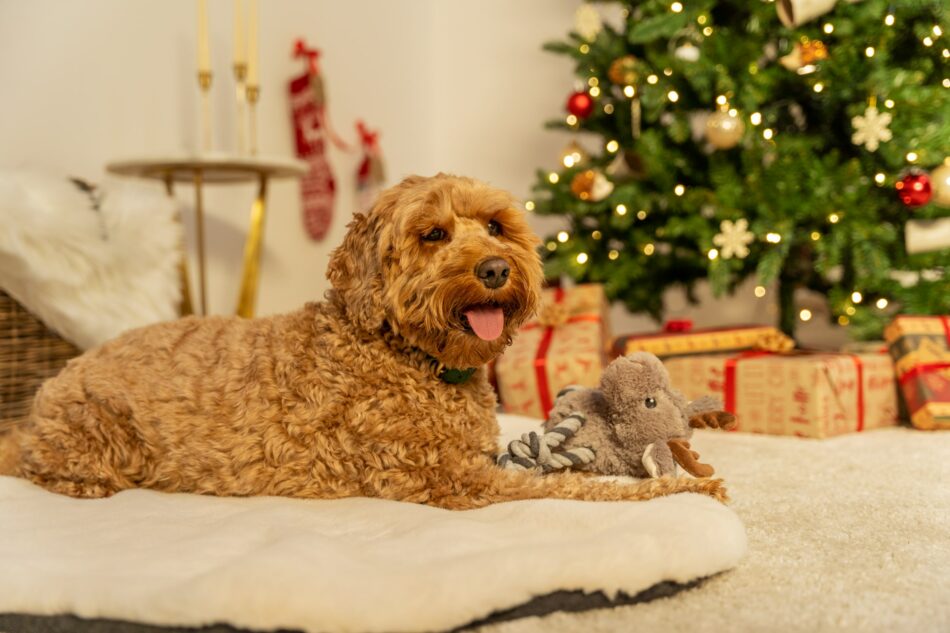
This entry was posted in Christmas on December 12th, 2020 by alisa.deluca
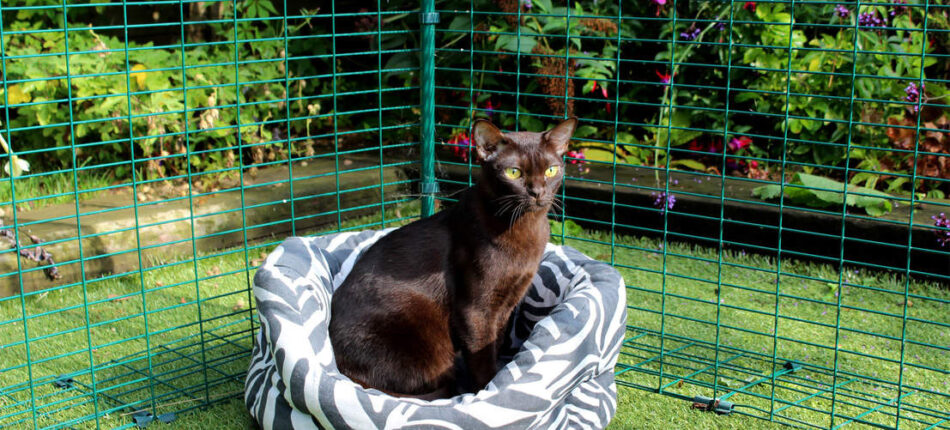
In Britain, the fact that black cats are considered unlucky is a complete reversal of the original belief that black cats brought good luck. It is white cats that were originally considered unlucky. So, what caused this drastic change of fortune that now leaves us with the question of why are black cats unlucky?
There is an explanation behind this is transatlantic exchange. In America, which in its early days was obsessed with witches and witchcraft, black cats i.e. the classic pet of the witch, were demonized. This superstition was then imported along with all the other traditions of Halloween. What Halloween goody bag is complete without something related to pumpkins, bats and black cats of course?
Are black cats a sign of bad luck?
The American blacklisting of black cats is linked to the days when British settlers were founding colonies in New England. These founding fathers were Christian fundamentalists, hounding out anything they perceived as witchcraft. Witches and their pet cats were viewed with fear and hatred, and a black cat was thought to be particularly demonic. They are featured regularly in witch trials of the period.
This classic US symbol of bad luck began to overturn the black-cat-good-white-cat-bad superstitions of pre-20th century Britain after the appearance of the 1934 movie The Black Cat. The film was based on a short story by American horror writer Edgar Allen Poe, which was first published in 1843. The commercialisation of Halloween in the last few decades has set in stone these superstitions of the black cat as a scary beast.
Are black cats lucky or unlucky?
The reason why black cats hadn’t been demonized in Britain was that witches and their cats had always been there, originally as part of everyday life. And there was nothing sinister about keeping a cat – they were the only means of controlling the mouse and rat population. The so-called witches were the herbalists and healers of the villages, the Middle Ages version of the GP.
Black cats used to be thought lucky on board ships, not only keeping the rodent population under control, but helping to keep storms away too. Fishermen’s wives sometimes kept black cats at home to ensure their husbands were safe at sea. However, if the cat ran away, or if a random black cat hopped on board and then off again, it meant the ship was in danger of sinking.
In Scotland, the arrival of a black cat in a house was said to be a sign of good fortune. In general, a black cat taking up temporary residence on a porch was said to be a good omen. This is an echo of superstitious ages gone by, when felines (and not just black cats) symbolized domestic happiness. In Ancient Egypt, for example, the cat-shaped goddess Bastet was a symbol of domestic bliss and good fortune.
Gladstone – the black cat of Whitehall
The tradition of black cats as bringers of good luck still survives at the heart of the British government. Whitehall has adopted several cats from Battersea Dogs & Cats Home over the years, for the traditional role of mouse hunter. Many of them have been black cats, including the current holder of the post, Gladstone, who began his official government work in 2016.
Gladstone the black cat is a social media star, not surprisingly. His popular Instagram page makes him one of the most famous black cats around today.
What is the superstition about a black cat crossing your path?
In some parts of the world, including Britain a few centuries ago, the direction of travel of a black cat crossing the road was important. If the cat crosses your path left to right, it means good luck. If it goes the other way, it means bad luck. Similarly, if the cat walks towards you, it brings good luck, but if it runs away from you, it takes the good luck with it. For this reason, chasing a black cat from your property is said to bring misfortune.
The ultimate symbol of a black cat running away is when it dies. In the 1640s, King Charles I was reported to have said that he owed his good fortune to his pet black cat, and that he dreaded the day its nine lives were used up. Shortly after the cat’s death, Charles – having been on the losing side in the English Civil War – was arrested and eventually beheaded.
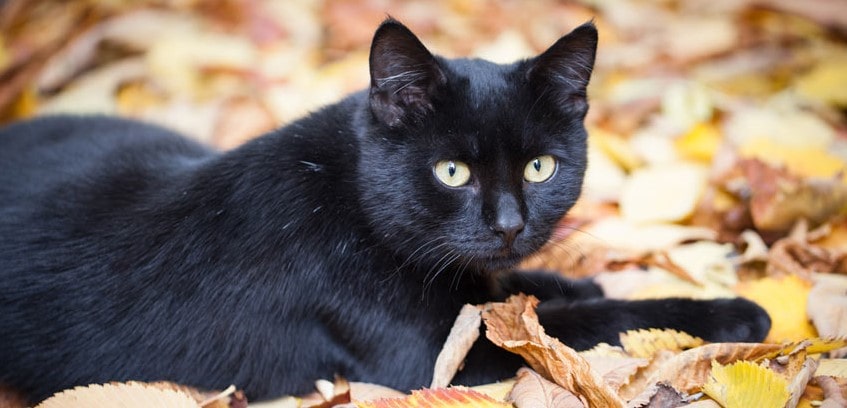
Where do black cats originate from?
In folklore, the witches’ black cat has very deep roots indeed. In Greek mythology, Hecate, the goddess of witchcraft, had a black cat that had originally been Galinthias, a servant of Hera (wife of the god Zeus). She had turned him into a black cat as punishment for trying to prevent the birth of Hercules. Shakespeare’s witchcraft-colored play Macbeth features Hecate (although her black cat is not mentioned).
Putting all superstition about cats aside, a black cat is simply a cat with the maximum amount of melanin, which turns the fur black. Pure black cats are rare in cross-breed cats, and it is thought that only 22 of the recognized cat breeds can have completely black varieties. If you’d like to find out more about different types of cats, take a read of the Omlet Cat Guide.
The superstitions about black cats may all sound like simple good fun, but there are definitely downsides. Stray cats and kittens with black fur are harder to relocate, and there are stories of black cats being abused by some trouble makers during Halloween. So, even though we may dismiss the superstition about unlucky black cats as harmless fun, it can still cause very real problems.
The truth of the matter is that black cats, along with all other cats, are wonderful and bring nothing but good luck. The estimated 200 million cat owners worldwide will certainly vouch for that!
Do you believe black cats are unlucky? Superstitious or not, one thing that can’t be denied is how much joy cats bring to the lives of their owners! Treat your purry pal to Omlet’s wide range of Cat Products including the innovative Freestyle Cat Tree to give your feline friend the fun they deserve!
This entry was posted in Cats on December 7th, 2020 by alisa.deluca

Avian Flu is an issue that affects all chicken keepers. Efforts to contain the virus never result in its eradication, and the fact that it is not currently in the headlines doesn’t mean it’s disappeared. Many countries are enduring the avian flu version of lockdown in certain regions this year, and people are being told to take appropriate measures.
There have been local outbreaks in the UK, Germany, Denmark and the Netherlands in the second half of 2020. The current avian flu strain in Europe is a low pathogenic avian influenza, meaning that it is highly unlikely to spread from its bird hosts to humans. The ghost of a bird flu pandemic cannot be ignored, though.
The outbreak is thought to have originated in western Russia and Kazakhstan, following the same pattern as the avian flu outbreaks in the summers of 2005 and 2016. In both previous cases, epidemics soon spread to northern and eastern Europe.
This article describes the impact of pathogenic avian influenza, how it spreads, and what chicken keepers can do to prevent it, based on government guidelines and other practical measures.
What is avian flu?
As its name suggest, the avian flu virus is a form of influenza (flu) biologically adapted to bird hosts. Bird flu is not a virus specific to chickens and poultry, and in theory any bird, wild or domestic, can be infected. The reservoir of avian influenza is, indeed, flocking wild birds such as geese and gulls.
Symptoms of avian flu in chickens
Chickens with avian influenza will display various symptoms. They may be less active than usual, and will lose their appetite and show signs of nervousness. Their egg production will drop, and eventually their combs and wattles will look swollen, with a blue discoloration. Other avian influenza symptoms in poultry include coughs, sneezes and diarrhea. Unfortunately, many of these bird flu symptoms are associated with other ailments, too, so a vet will need to make the diagnosis.
It can take 14 days for an avian influenza outbreak to spread throughout a flock. Some infected birds may exhibit no signs, even though they are still potential virus carriers. Others may ail and die very quickly.
How to treat avian flu in chickens
You can reduce the risk of avian influenza in your poultry by following the latest guidelines issued by Defra and the government. Vaccination of a flock at risk from the avian influenza virus is the only method of prevention. If avian influenza affects a flock, the flock has to be put down. Links to the latest US government advice is given at the end of this article.
How to protect your chickens
- Place your birds’ food and water in fully enclosed areas that are protected from wild birds, and remove any spilled feed regularly.
- Keep your equipment clean and tidy and regularly disinfect hard surfaces.
- Clean footwear before and after visiting your birds.
- Ensure clothing that you use when handling your chickens is washed after contact.
- Use run covers to protect your chickens’ enclosure from wild bird droppings.
- Keep moveable coops in the same place – if coops are moving to fresh ground there is more chance of coming into contact with wild bird faeces.
- Keep a close eye on your chickens. If you have any signs of illness, seek advice from a qualified vet.
Guidelines from the CDC
If you are concerned your chickens may have been exposed to the the Avian Flu please follow these guidelines here to protect yourself at: https://www.cdc.gov/flu/avianflu/avian-in-humans.htm
CDC currently recommends a neuraminidase inhibitor for treatment of human infection with avian influenza A viruses. CDC has posted avian influenza guidance for health care professionals and laboratorians, including guidance on the use of antiviral medications for the treatment of human infections with novel influenza viruses associated with severe disease. Analyses of available avian influenza viruses circulating worldwide suggest that most viruses are susceptible to oseltamivir, peramivir, and zanamivir. However, some evidence of antiviral resistance has been reported in Asian H5N1 and Asian H7N9 viruses isolated from some human cases. Monitoring for antiviral resistance among avian influenza A viruses is crucial and ongoing.
Although avian influenza A viruses usually do not infect people, rare cases of human infection with these viruses have been reported. Infected birds shed avian influenza virus in their saliva, mucous and feces. Human infections with bird flu viruses can happen when enough virus gets into a person’s eyes, nose or mouth, or is inhaled. This can happen when virus is in the air (in droplets or possibly dust) and a person breathes it in, or when a person touches something that has virus on it then touches their mouth, eyes or nose
The best way to prevent infection with avian influenza A viruses is to avoid sources of exposure. Most human infections with avian influenza A viruses have occurred following direct or close contact with infected poultry.
This entry was posted in Chickens on December 4th, 2020 by alisa.deluca
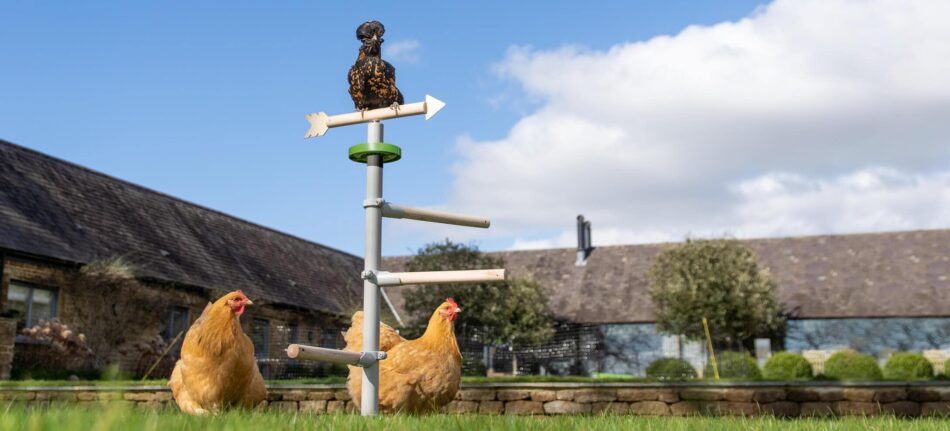
Most chicken keepers will fall into the eventually of “chicken math”. First, it was three, then four and now you’re thinking an eighth hen wouldn’t hurt…right? The idea of having flockmate best friends sounds great, but being the same species isn’t always enough for chickens to live in harmony. Certain chickens get along better than others, but which breeds make for besties?
Normal chicken behavior
All different breeds of chicken have been developed from the same ancestor, the Asian Jungle Fowl, and so fortunately, most chickens get along, regardless of the variety. However, there are some exceptions to this general rule.
Any new hen introduced to a flock will need to be separated from the other birds, but still be able to see them through a fence, for a week or so until all the birds get used to each other. Once introduced, they will find their natural place in the chicken pecking order, and that may involve a little bullying and squabbling in the early days. This is all very natural and has nothing to do with feuds between specific breeds.
Occasionally, one hen will fall out with another for no obvious reason, and the weaker chicken will sometimes be pecked and harassed by the more aggressive bird. If this situation continues for more than three days after introducing the new chicken, the two combatants may need to be separated.
What breeds of chickens are aggressive?
Some chicken varieties are more confident and assertive than others, but this does not make them aggressive. Aggression is usually the result of environment – poor living conditions – or visual stimulus. The chicken bullying only usually persists beyond the first few days if the new hen has unusual plumage on its head. The fancy crown of feathers on the Araucana, Houdan, Poland, Silkie and Sultan breeds, for example, is like a red rag to a bull for some hens.
The reasons for this aggression are purely instinctive. Chickens respond to the size of their fellow birds’ combs, and there is evidence that larger-combed chickens tend to dominate the pecking order and will challenge any large-combed newcomer to assert and retain her dominance. No one is entirely sure how the visual stimulus works with feather-crowned breeds. A chicken with feathers on its head is judged by the other hens to be one of two things – either a bird with a very large comb, and therefore a threat, or one with no comb at all, which makes it fair game for some bullying. Whichever way a hen looks at it, the feather-headed newcomer is a direct challenge to the dominant birds.
Birds with fancy head feathers are additionally vulnerable because the plumage flops in front of their eyes, impairing their vision, and so they may not spot an oncoming attack. This can result in pecks and injuries.
Other causes of chicken bullying
Other unusual feathering will occasionally inspire bullying amongst chickens, such as the feathered ‘trousers’ of the Faverolles. This is not generally a problem, though, and this breed should get along well with your other hens.
Sometimes, new chickens with no unusual feathers or peculiar combs may be picked on if they are a different breed from all the other hens in the flock. The bullying appears to take place simply because the new chicken looks different to the others. This is an unusual issue, though, and clearly, the problem disappears if your existing hens are a mixed breed flock.
Do chickens bond with each other?
In general, mixing breeds actually assists with the pecking order and the general bonding, as different varieties have different temperaments. There is more likely to be squabbling in a run that has chickens of a single breed – they may all be assertive and dominant, or they may all be shrinking violets, depending on the breed, but they still need to establish a pecking order.
The body size of the hen does not affect how it is treated. A dainty bantam can rub along fine with a hulking Sussex, and a cockerel will be respectful of all his hens, regardless of their breed, and in the vast majority of cases the birds will all get on well together.
There are other practical considerations when keeping a mixed flock. Some chickens thrive in cold weather, while others are not as robust. Age may be an issue too, if you want to minimize the number of changes in your chicken flock. This isn’t to say chickens of different ages can’t get along but older chickens are more likely to bully other flock members. If possible, wait until your younger birds are close in size before moving them in.
What chicken breeds get along best?
Some breeds are naturally friendly, and these varieties are far less likely to start pecking and bullying each other. Super-chilled backyard chickens include Australorps, Cochins, Easter Eggers, Rhode Island Reds, Silkies, Sussex and Wyandottes.
Omlet and your flock
Whether you’ve got a flock of ten or two, Omlet has the products to support the needs of your chickens. Keep your hens mentally and physically stimulated to help them live in harmony with our range of chicken toys and accessories to add to your chicken coop and chicken run.
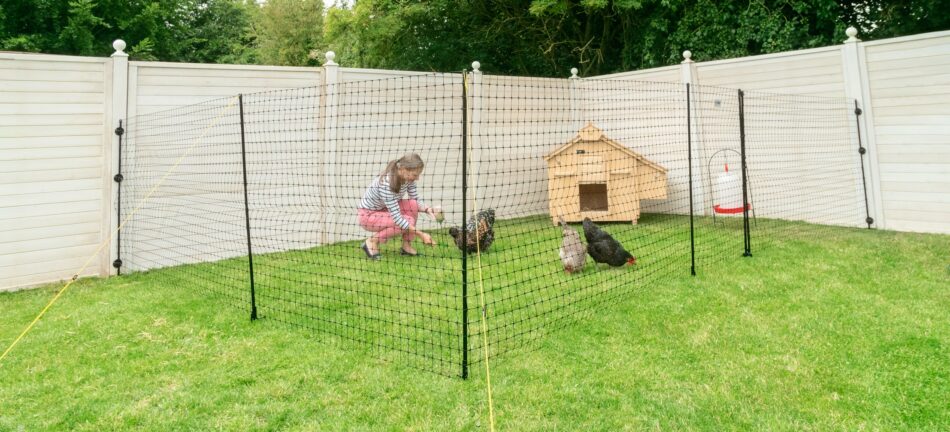

This entry was posted in Chickens on December 4th, 2020 by alisa.deluca
It’s no secret that cats are opinionated, and there are 10 things humans do that cats hate. These feelings aren’t wielded as a personal vendetta against their owners — they’re just natural behaviors domesticated felines have inherited from their wild ancestors. So before you chalk up your cat’s attitude to quirky personality traits, see if some of your behaviors might be creating friction in your relationship with your feline.
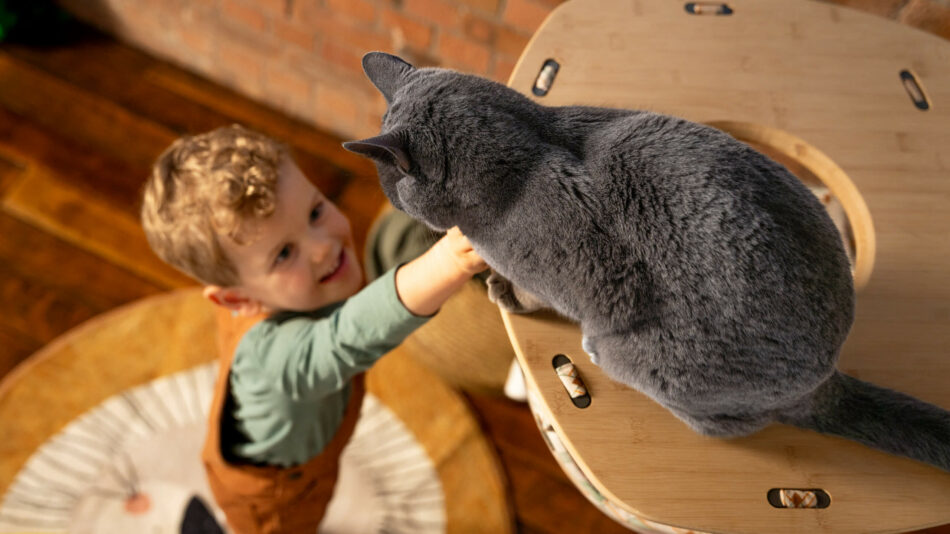
Why are you the way you are? — Sincerely, Every Cat Owner
If you share your home with a feline, at some point you will inevitably ask why your cat does certain things. All cats are quirky — it’s part of why we love them. But a large reason for their unique behaviors is due to their close connection with their ancestry. You’ll notice cats still closely resemble cougars, lions, ocelots, bobcats, and other wild felines, while most dog breeds don’t share very many similarities in their appearance with wolves or coyotes. This is also why cats tend to be more aloof than dogs, and are more independent than canines.
Does this mean cats make bad pets? On the contrary — these attributes make cats loyal, loving companions once they’ve bonded with their owners. Connections between cats and humans run deep, spanning thousands of years. But to establish a lasting bond with your cat, you’ll need to understand their basic nature and avoid certain actions or behaviors that are off-putting to them. And while there are exceptions to every rule, here are 10 common ways humans interact with their cats that are actually offensive to felines.
Making loud noises around your cat
Cats have much better hearing than humans. This is a trait passed down from their wild cousins, and it serves them well in most circumstances. But their keen hearing also means that sudden or sustained loud noises can startle or grate on your cat’s nerves. Washing machines, loud conversations, blaring music, fireworks, parties, and yelling are all sounds that can stress your cat. Most cats will find a quiet place to wait out the commotion, so if you notice your cat hiding more than usual, take stock of the noise level in your home.
Aggressive petting
While dogs are known to enjoy an enthusiastic back scratch or belly rub, most cats prefer a more gentle approach. Heavy-handed patting, rapid scratching, or handling a cat’s tail, paws, or stomach will make some cats feel threatened. This can trigger cats to run, lash out with a well-aimed swat, or nip. Most cats also dislike being cuddled or hugged, which can also trigger similar stress reactions. Stick with gentle strokes to your cat’s fur, always going with the direction of their hair. Most cats will also welcome a gentle scratch under their chin or along the sides of their face.
Ignoring your cat
Not all cats crave attention — but when they do, it’s on their terms and in a manner of their choosing. Ignoring your cat when they’re demanding your attention can be a personal affront to them. If you notice your cat jumping into your lap, hovering around your hands, meowing at you, or laying across your work surfaces, they’re expecting attention. Many cat owners are no stranger to the phenomenon of having a demanding cat as a semi-permanent feature on their desk, keyboard, or lap, and it’s best to soak in the quality time while it’s their idea.
Bathing your cat
You may see tigers at the zoo play in water elements, but as a general rule, cats do not like water. In fact, they go to great lengths to avoid getting wet. A cat’s tongue is well-designed for keeping their coats clean, and the vast majority of cats won’t require an actual bath in their lifetime. So, resist the temptation to lather up your feline unless they’ve gotten into something too dangerous or sticky for them to clean off themselves.
Taking your cat for a car ride
Most cats do not enjoy riding in the car. While your family dog may happily bound into the car, their tongue lolling out the side of their mouth through an open window — your cat has very different opinions of moving vehicles. Cats are prone to motion sickness, and the combination of movement, noise, and smells will stress them. Limit car rides with your cat to necessary trips like vet visits or moving to a new home.
Adding new pets to the family
Some cats enjoy the company of others, but generally speaking, cats will be just fine as the sole pet in a home. Cats are territorial, and are perfectly content having a house to themselves. Bringing a new pet home, whether it’s another cat, a dog, or even a small pet, can create stress for your feline. Always introduce new pets slowly, and watch your cat’s reaction closely. Some cats can cohabitate with others, while others will always prefer to be the sole apple of their owner’s eye.
Rearranging your home
Moving furniture around your home may be feng shui, but rather than having a calming effect on your cat, it can be quite the opposite. Cats are very in tune with their surroundings and even small changes can cause them to stress. This is especially true if you move their belongings to a different part of the house, or if you’re moving to a new home. Give your cat plenty of time to adjust to changes, no matter how small they may be.
Leaving the litter box dirty
Cats are very concerned with being clean. They are meticulous with their coats, prefer pristine surroundings, and despise a dirty litter box. Your cat will avoid using a litter box that’s too full or smelly, which is one of the main reasons for cats seeking alternative options in your home. The desire to cover their eliminations again stems from nature — they want to hide their presence from other animals. Clean your cat’s litter box daily, and don’t use scented litter or deodorizers, as these can be offputting or too strong for your cat’s keen sense of smell.
Physical discipline
Negative reinforcement in the form of physical discipline doesn’t communicate to cats. Swatting your cat for unwanted behaviors is a sure way to break their trust and damage your relationship with them. By nature, cats are dominant, independent animals, which makes them reactive to physical discipline. If you see your cat doing something less than desirable, break their attention by clapping your hands, whistling, or speaking sternly to them. Redirect them to a desired behavior, and reward them with a pet or a treat.
Not giving your cat enough space
A cat bed in a secluded corner or a cat tree with multiple levels of escape is what all cats crave. While most cats will happily cohabitate with their humans, they need their own space to retreat to throughout the day. Cats are solitary animals by nature, so they need a quiet refuge from human routines and activities. If you see your cat napping in their space, observe and appreciate them from a distance — they’ll come to you when they’re ready.
Omlet and your cat
Cats are intriguing and mysterious pets that grace the homes of millions worldwide. Their popularity is second only to dogs, speaking to their allure and delightful companionship. Our cat products speak to their nature, and encourage natural behaviors to help your cats live healthier, happier lives. From cat trees and scratchers to cat litter boxes and cat beds, we have everything your feline needs to feel their best.
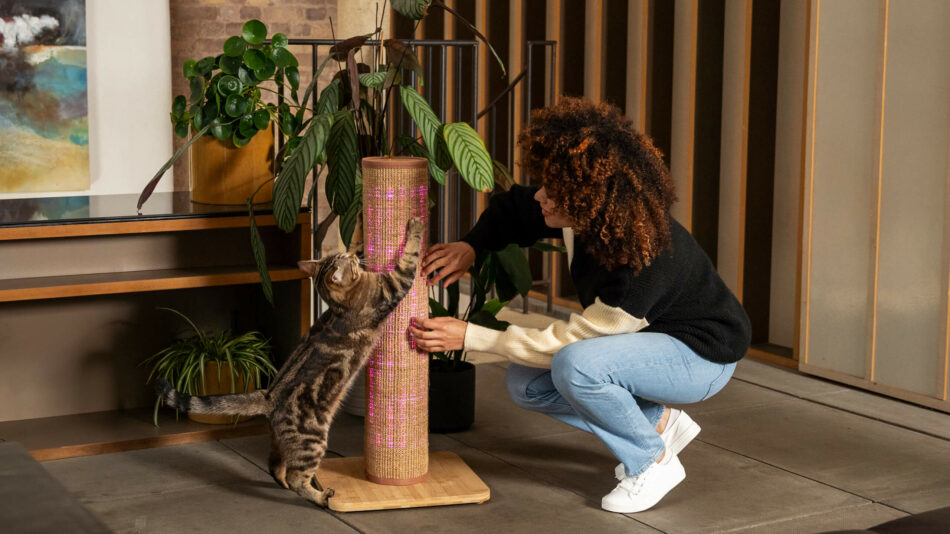

This entry was posted in Cats on December 1st, 2020 by alisa.deluca
 Photo by Jasmin Schuler on Unsplash
Photo by Jasmin Schuler on Unsplash











